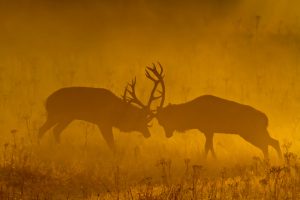Wilder Landscapes
Fran Southgate from the Sussex Wildlife Trust gave the Group’s October meeting an interesting presentation on Sussex landscapes and the efforts of the Trust to ‘re-wild’ them. Much work had been done on the Trust’s own reserves (1,900 hectares/4,700 acres) but this was only 0.5 per cent of the areas of the two counties. More effort was going into persuading landowners and farmers to manage their land in more traditional ways which allowed native species to survive and create biodiversity. Trees and hedges added to the landscape, and less use of insecticides helped pollination, and of veterinary treatments like ivermectins (for worms) avoided harmful effects on wildlife.
She said nature conservation was moving away from a focus on individual species and towards a restoration of ‘ecosystems’, recognising the interdependence of plant and animals in food chains and in keeping soils fertile and farm animals healthy. The free movement of wild animals was particularly important, and the Trust was working with many agencies and landowners to create wildlife corridors across the two counties – with some success already. There is now a corridor from Climping to Horsham, including the Knepp estate where rewilding has transformed the landscape while sustaining viable agriculture. 
Stag Rut (photo by Paul Lindley). One of many great illustrations from Fran’s talk,
The Trust is also involved in conservation of Sussex rivers and the coastal waters. There are 145 km/90 miles of chalk streams under protection, and beavers have been reintroduced in other rivers, to help with flood control by building their dams. The underwater landscapes off-shore were hardly thought of a few decades ago but now we know that the kelp forests are under attack by trawlers, and the Trust is involved with groups like the Littlehampton Kelp Divers, to find way to protect this asset.
Responding to questions, Fran stressed the message that while food production, housing needs and public health were bound to make demands on the landscape, they could all be managed more carefully and in ways which allowed more of our natural wild landscape to survive.
Graham Tuppen gave his update on local wildlife, including the large numbers of smooth-hound sharks recently washed up on Goring and Ferring beaches, and Ed Miller reported on the three current planning appeals and the changes in Government policy which meant they would almost certainly be dismissed.
